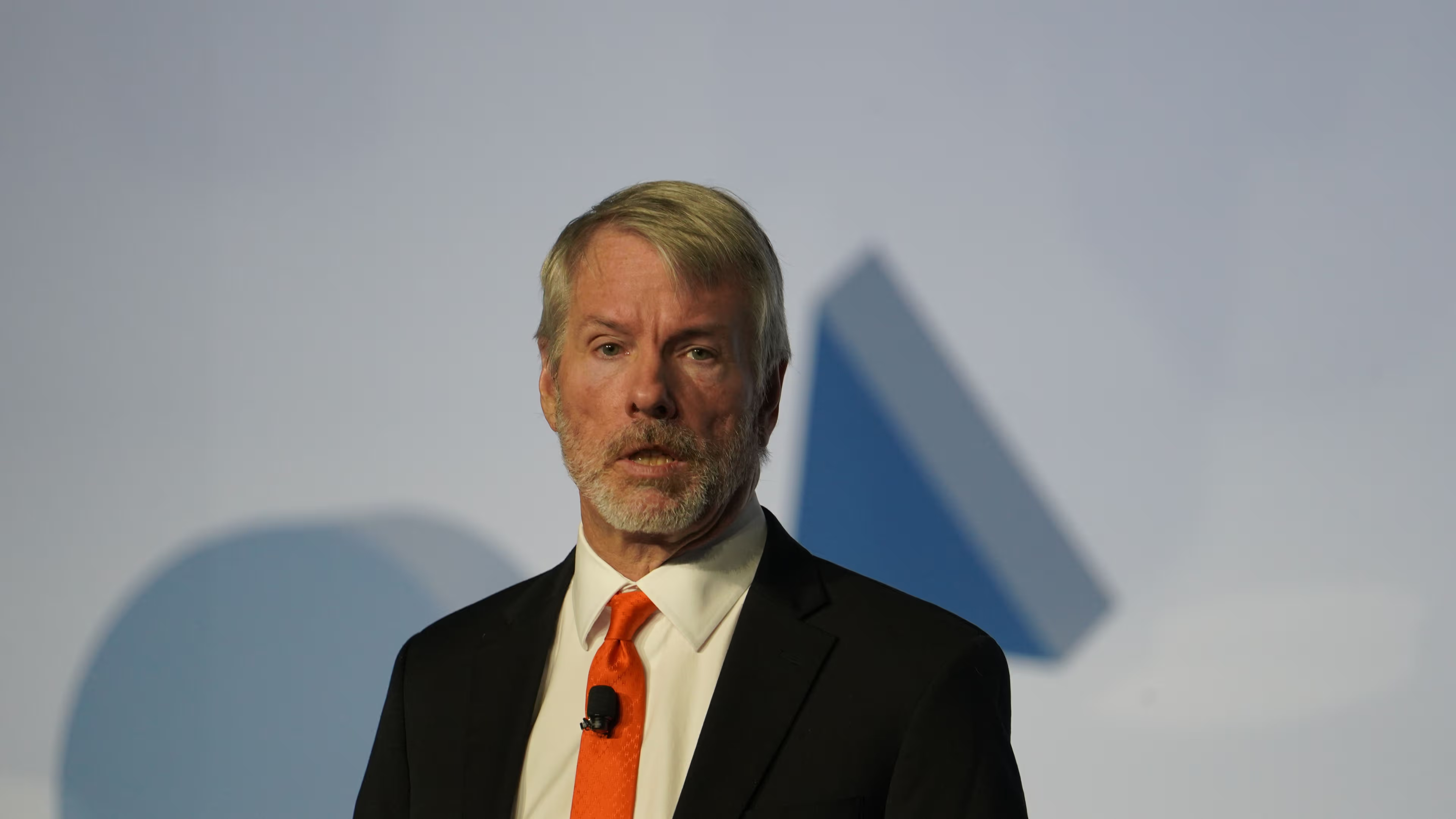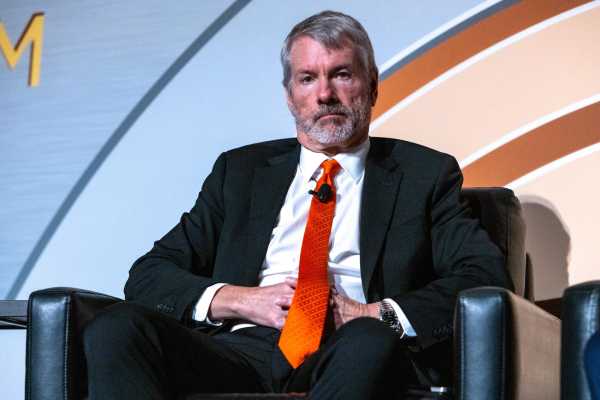Strategy's Saylor Claims BlackRock's IBIT Will Be World's Largest ETF Within a Decade
Michael Saylor Says BlackRock's Bitcoin ETF Will Be the World's Largest ETF in the Next Ten Years
Over the past five trading days, U.S. Bitcoin ETFs have attracted $2.8 billion in net inflows.
James Van Straten | Edited by Parikshit Mishra Updated April 25, 2025, 12:04 PM Published April 25, 2025, 10:23 AM

What you should know:
- Over the past five trading days, IBIT has attracted $1.3 billion in total inflows, helping to push the price of Bitcoin from around $85,000 to $94,000.
- CME's annualized Bitcoin ETF trading volume has increased to nearly 10%, indicating growing risk appetite as open interest in futures increases along with inflows.
Over the past five trading days, U.S. spot Bitcoin ETFs (BTC) have seen net inflows of about $2.8 billion, helping push the price of Bitcoin from about $85,000 to $94,000. In particular, the iShares Bitcoin Trust (IBIT) has accounted for $1.3 billion of that inflow.
Michael Saylor, chairman of the largest listed Bitcoin holder Strategy (MSTR), said that “IBIT will be the largest ETF in the world in ten years.” Saylor made the remarks at the Bitcoin Standard Corporation Investor Day.
IBIT currently has a market cap of $54 billion, with trading volume exceeding $1.5 billion on Thursday. By comparison, the largest ETF by market cap, the Vanguard S&P 500 ETF (VOO), has a market cap of $593.5 billion, more than ten times larger than IBIT.
Eric Balchunas, a senior ETF analyst at Bloomberg, acknowledged the possibility that IBIT could become the largest ETF, but noted that it would be unusual.
“It’s possible, especially if IBIT starts attracting more cash than VOO, but it would require inflows well above $1 billion per day — probably in the $3 billion to $4 billion per day range to gain momentum. Simply put, it would take some exceptional events to happen, but it’s possible,” Balchunas said.
Meanwhile, the annualized underlying trading volume of bitcoin ETFs, where investors buy the ETF and sell CME bitcoin futures, has risen to nearly 10%, up from 5% in early April. That growth, coupled with a 2,000 BTC increase in futures open interest over the past week, suggests that some of the net ETF inflows may not just be pure directional bets, but also part of the underlying trading volume.



